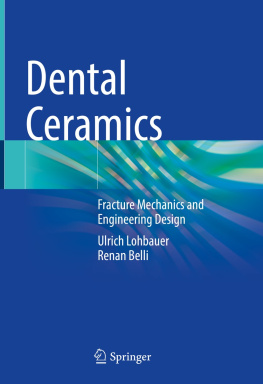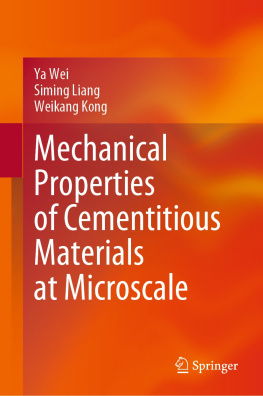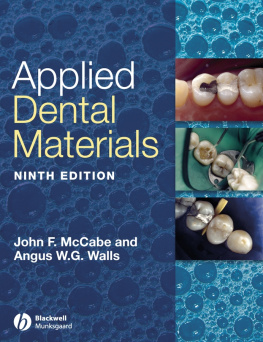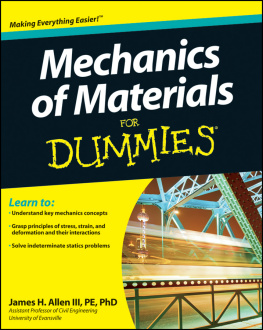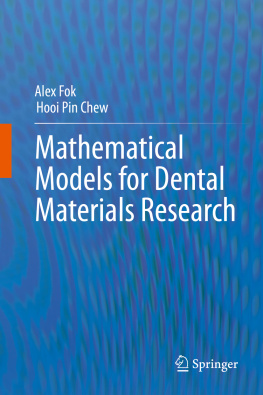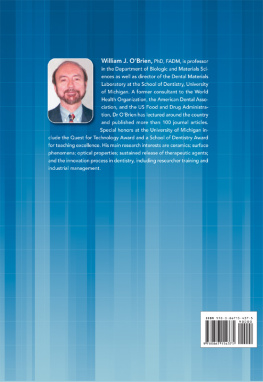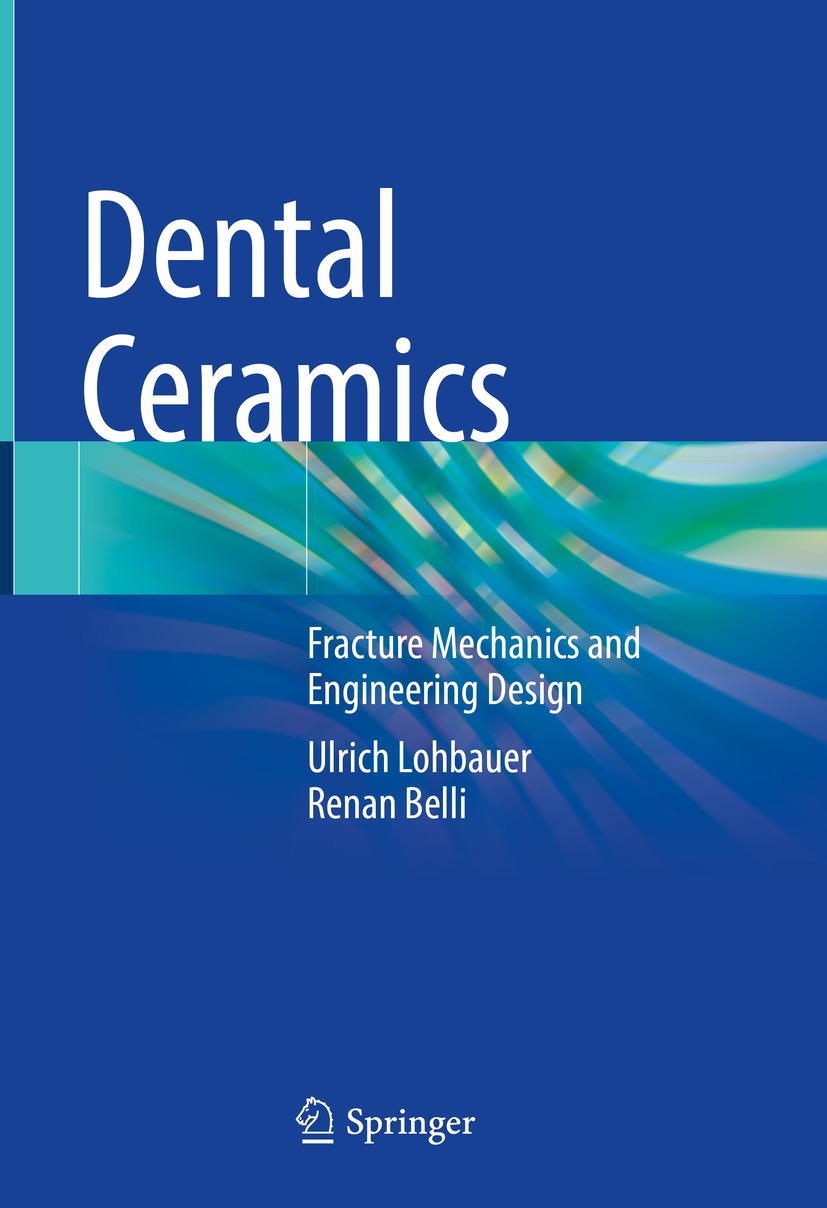Ulrich Lohbauer and Renan Belli
Dental Ceramics
Fracture Mechanics and Engineering Design

Logo of the publisher
Ulrich Lohbauer
Dental Clinic 1 Operative Dentistry and Periodontology, Research Laboratory for Dental Biomaterials, Friedrich-Alexander University of Erlangen-Nuremberg, Erlangen, Germany
Renan Belli
Dental Clinic 1 Operative Dentistry and Periodontology, Research Laboratory for Dental Biomaterials, Friedrich-Alexander University of Erlangen-Nuremberg, Erlangen, Germany
ISBN 978-3-030-94686-9 e-ISBN 978-3-030-94687-6
https://doi.org/10.1007/978-3-030-94687-6
The Editor(s) (if applicable) and The Author(s), under exclusive license to Springer Nature Switzerland AG 2022
This work is subject to copyright. All rights are solely and exclusively licensed by the Publisher, whether the whole or part of the material is concerned, specifically the rights of translation, reprinting, reuse of illustrations, recitation, broadcasting, reproduction on microfilms or in any other physical way, and transmission or information storage and retrieval, electronic adaptation, computer software, or by similar or dissimilar methodology now known or hereafter developed.
The use of general descriptive names, registered names, trademarks, service marks, etc. in this publication does not imply, even in the absence of a specific statement, that such names are exempt from the relevant protective laws and regulations and therefore free for general use.
The publisher, the authors, and the editors are safe to assume that the advice and information in this book are believed to be true and accurate at the date of publication. Neither the publisher nor the authors or the editors give a warranty, expressed or implied, with respect to the material contained herein or for any errors or omissions that may have been made. The publisher remains neutral with regard to jurisdictional claims in published maps and institutional affiliations.
This Springer imprint is published by the registered company Springer Nature Switzerland AG
The registered company address is: Gewerbestrasse 11, 6330 Cham, Switzerland
Preface
Are there enough books about ceramics and glass-ceramics out there? Is there a sufficient number of books on the mechanics of fracture of brittle materials already available or do we need more? What about those subjects focused specifically on the discipline of prosthetic dentistry? Is the information collected in those books, updated? Is there room for new perspectives and new approaches to addressing the topic of the mechanics of fracture in dental ceramics, at all?
When we got confronted with the above questions, the decision to write this book fell heavily on the latter, despite the answers to most of them being dismissive of any need for yet another book on dental ceramics.
Our rationale here is to provide a dualistic perspectiveyet not necessarily antitheticalon the fracture behavior of dental ceramics under several aspects: theory and practice, laboratorial and clinical, stability and failure. We go about it, for starters, offering some materials science background on the chemistry, synthesis, processing, and microstructure of dental ceramics and their relationships to the mechanical properties as assessed in a laboratorial setting, using the principles laid out by modern fracture mechanics. We confine the depth to modern, more clinically relevant materials, and forego on describing those that were once important, but that find increasingly fewer application in todays clinical practice.
Although undergraduate students of dental medicine and even dentists might find good use of much information contained herein, our main target audience was aimed to be the young researcher, that person who, as we once did, chose to take the path of academia, branching off from a typical career in the dental practice or in the industry, to pursue a profession oriented toward research and transfer of knowledge, both sedimented in a scientific concept. For that reason, we dedicate some space for digging into some of the fundamentals of mechanical testing and methodological approaches for determining material properties within a mechanistic framework.
In the last part of this book, we step out of the lab, yet not leaving the fundamentals of mechanics behind, to address the failure of dental ceramic constructs from the perspective of the forensic fractographer. By seizing on the richness of information that a clinically fractured prosthetic piece can offer on the fracture event, one can objectively address aspects of engineering design to reduce undesirable structural weaknesses and stress concentrations, thus guiding the way toward maximizing service lifetime. For that we employ the vast experience gathered in years of collaborative work in fractography courses and lessons learned from constant exchanges with renowned professionals and academics in the field of mechanical engineering.
We hope this book can generate some fresh perspectives on old problems and provide the reader with a basis for insights in materials development, a deeper understanding of mechanical concepts and incite the taste for accurate testing.
Ulrich Lohbauer
Renan Belli
Erlangen, Germany
Acknowledgements
Our scientific path up to the point of writing this book has been filled with extremely fruitful exchange of ideas with uncountable number of scientists in the field of dentistry and engineering, from whom we have learned a lot through informal talks and project collaborations. Our special appreciation for valuable insights and teamwork over the years must include the names of Susanne Scherrer, George Quinn, and Claus Mattheck. We also thank Achim Gre for his extensive help in producing much of the artwork in this book.
Contents
The Author(s), under exclusive license to Springer Nature Switzerland AG 2022
U. Lohbauer, R. Belli Dental Ceramics https://doi.org/10.1007/978-3-030-94687-6_1
1. Introduction
Ulrich Lohbauer
(1)
Dental Clinic 1 Operative Dentistry and Periodontology, Research Laboratory for Dental Biomaterials, Friedrich-Alexander University of Erlangen-Nuremberg, Erlangen, Germany
Ulrich Lohbauer (Corresponding author)
Email:
Materials used in dentistry need to fulfill a certain performance in order to become indicated for an individual clinical case. This performance generally consists of demands toward biological and chemical stability as well as optical appearance andmost decisivethe mechanical resistance against intraoral loading. As materials for a restorative filling or prosthetic replacement are commonly in occlusal contact with the opposing dentition and need to function under load over time, the mechanical stability becomes the central property in dental decision-making.
This book aims to introduce the principles of fracture mechanics of brittle materials to the educated and interested readership with ambitious goals in dental materials science. The study of this book certainly requires background in mechanical basics and requires a sound analytical understanding of how to approach a scientific problem and how to simplify complex and multifactorial research questions. On the other hand, this book does not go that far to request a mathematical education or study of solid state physics. It is written for ambitious dental materials researchers from academia and industry starting their scientific path into deep and sound mechanical research on dental ceramics.

